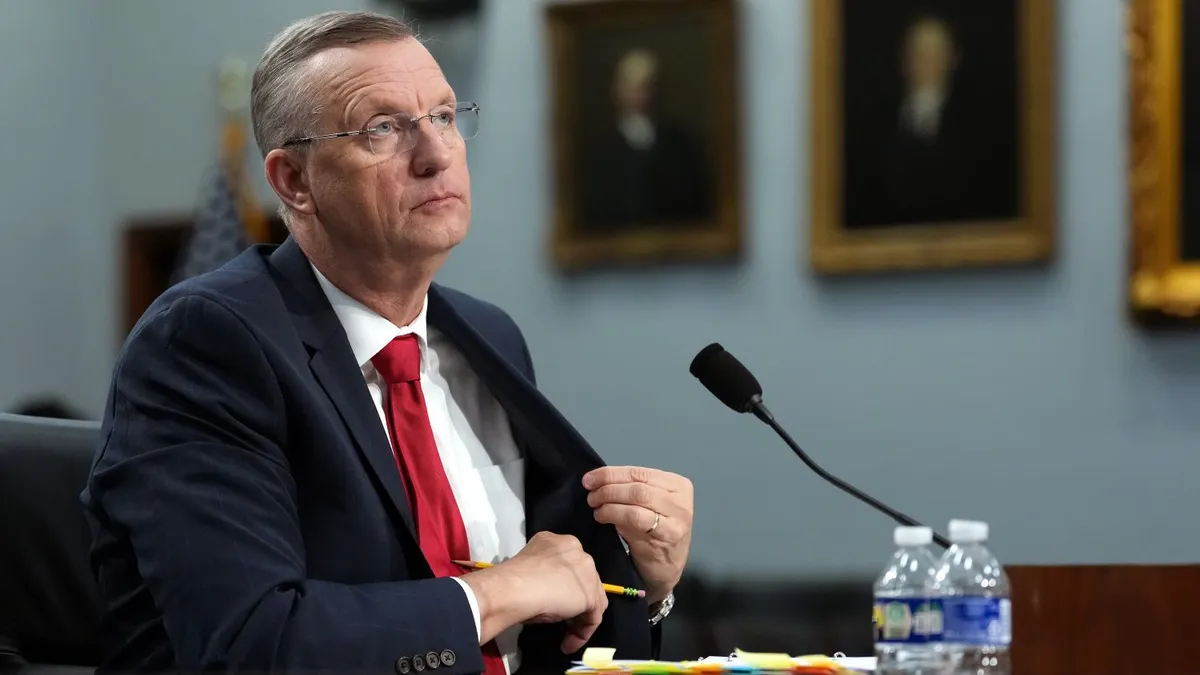Dive Brief:
- The Department of Veterans Affairs is looking to accelerate the rollout of its Oracle electronic health record after the agency finishes deployments at more than a dozen medical centers next year, Secretary Doug Collins told lawmakers last week.
- The VA is hoping to roll out the software to 20 to 25 sites in fiscal year 2027, Collins told a House Appropriations subcommittee on Thursday.
- Thirteen VA facilities are scheduled to receive the Oracle EHR next year — some of the first medical centers to receive deployments after the agency largely halted new rollouts in the spring of 2023. “There’s been no momentum in this project,” Collins said. “Once you get momentum, you can add more sites as we go.”
Dive Insight:
Collins testified at two House hearings last week on the VA’s budget request for fiscal year 2026.
The agency is requesting $3.5 billion for the Electronic Health Record Modernization program, which is tasked with replacing the VA’s aging medical record system with the Oracle EHR, according to Collins’ written testimony from a separate hearing in front of the House Committee on Veterans’ Affairs on Thursday.
Those funds will enable the agency to manage deployments in fiscal year 2027, according to the testimony.
The VA is seeking to speed the EHR’s rollout despite problems successfully deploying the software in the past.
The agency first awarded the contract to replace its legacy record to EHR vendor Cerner — later acquired by technology giant Oracle — in 2018.
But seven years later, only six medical centers have gone live with the Oracle record. The project has been plagued with errors and technical issues, including problems that may have resulted in patient harm.
Lawmakers have long criticized the VA and Oracle for the implementation, which has become increasingly expensive — though government watchdogs warned earlier this year that the ultimate cost of the project is unclear.
“I'm still dumbfounded at the billions and billions and billions of dollars that have been poured into an EHR that should have never been done in the first place,” Rep. Greg Murphy, R-N.C., said Thursday during the Veterans’ Affairs hearing. “It’s not a system that should be used for the largest healthcare system in the country.”
Despite the setbacks, the VA is scheduled to resume deployments next year, after the agency largely paused the deployment to allow the VA to fix problems at sites that had already begun using the system. Four sites in Michigan, four medical centers in Ohio, three in Indiana, one in Kentucky and another site in Alaska are scheduled for deployments next year.
During the Veterans’ Affairs hearing, Collins said the agency has trimmed down the number of internal committees tasked with determining what the standard version of the EHR would look like.
“It’s standardized from here on out, which is what every other hospital in the world does,” Collins said. “We have about 10% that is unique to VA. [...] That was able then to allow us to speed up the process.”
Meanwhile, the VA — like other parts of the federal government under the Trump administration — is moving to downsize, cutting around 80,000 workers.
The agency doesn’t have a quota for reducing the workforce at the Office of Information and Technology, which works with the EHR modernization program, and hasn’t yet made cuts at the office, Collins said.
Still, Rep. Nikki Budzinski, D-Ill., worried reductions in force could imperil the EHR rollout, which has to deploy the record to 170 medical centers in total.
“This is going to be a major undertaking,” she said. “In the midst of what I think is a massive reduction in force, and then a bare bones IT budget, I’m really worried that this is going to set up the VA for failure.”












